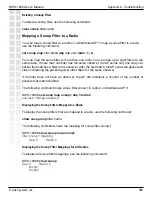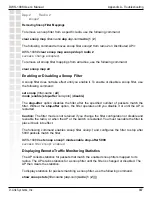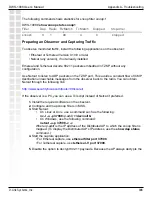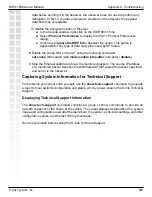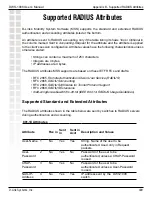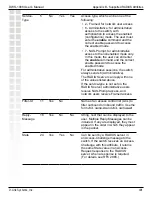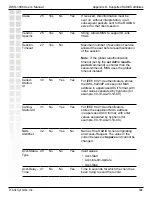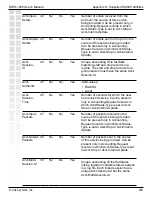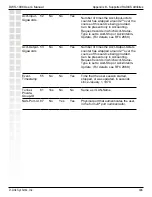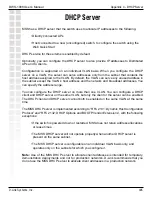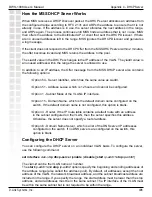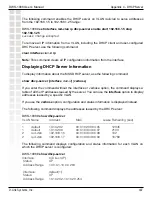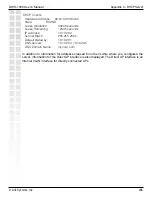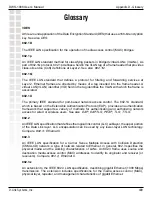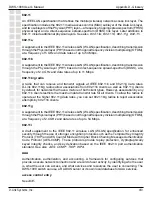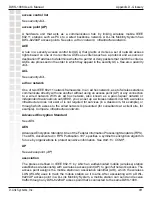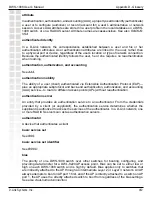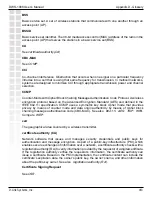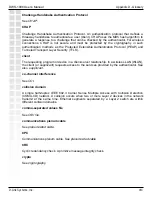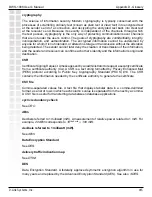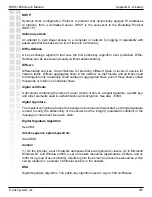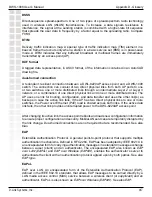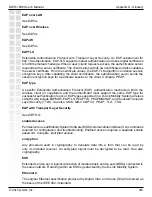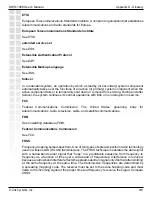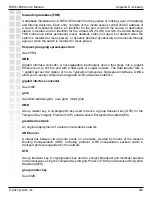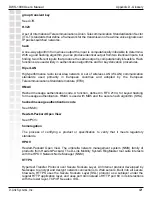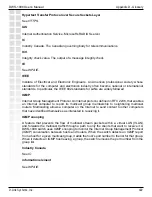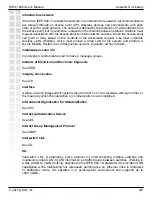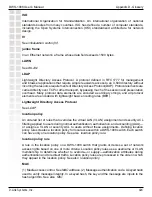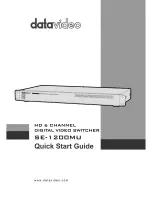
410
DWS-1008 User’s Manual
D-Link Systems, Inc.
Appendix D - Glossary
802.11
An IEEE LAN specification that defines the mobile (wireless) network access link layer. The
specification includes the 802.11 media access control (MAC) sublayer of the Data Link layer,
and two sublayers of the Physical (PHY) layer—a frequency-hopping spread-spectrum (FHSS)
physical layer and a direct-sequence spread-spectrum (DSSS) link layer. Later additions to
802.11 include additional physical layers. See also
802.11a
;
802.11b
;
802.11g
;
802.11i
.
802.11a
A supplement to the IEEE 802.11 wireless LAN (WLAN) specification, describing transmission
through the Physical layer (PHY) based on orthogonal frequency division multiplexing (OFDM),
at a frequency of 5 GHz and data rates of up to 54 Mbps.
802.11b
A supplement to the IEEE 802.11 wireless LAN (WLAN) specification, describing transmission
through the Physical layer (PHY) based on direct-sequence spread-spectrum (DSSS), at a
frequency of 2.4 GHz and data rates of up to 11 Mbps.
802.11b/g radio
A radio that can receive and transmit signals at IEEE 802.11b and 802.11g data rates.
D-Link 802.11b/g radios allow associations from 802.11b clients as well as 802.11g clients
by default, for networks that have a mixture of both client types. However, association by any
802.11b clients restricts the maximum data transmit rate for all clients. To allow the radios to
operate at the higher 802.11g data rates, you can set 802.11b/g radios to reject association
attempts by 802.11b clients.
802.11g
A supplement to the IEEE 802.11 wireless LAN (WLAN) specification, describing transmission
through the Physical layer (PHY) based on orthogonal frequency division multiplexing (OFDM),
at a frequency of 2.4 GHz and data rates of up to 54 Mbps.
802.11i
A draft supplement to the IEEE 802.11 wireless LAN (WLAN) specification, for enhanced
security through the use of stronger encryption protocols such as the Temporal Key Integrity
Protocol (TKIP) and AES Counter Mode with Cipher Block Chaining Message Authentication
Code Protocol (AES-CCMP). These protocols provide replay protection, cryptographically
keyed integrity checks, and key derivation based on the IEEE 802.1X port authentication
standard. See also
AES
;
CCMP
;
TKIP
;
WPA
.
AAA
Authentication, authorization, and accounting. A framework for configuring services that
provide a secure network connection and a record of user activity, by identifying who the user
is, what the user can access, and what services and resources the user is consuming. The
DWS-1008 switch can use a RADIUS server or its own local database for AAA services.
access control entry
See
ACE
.
Summary of Contents for DWS-1008
Page 1: ......

